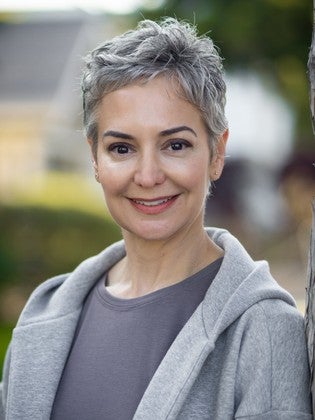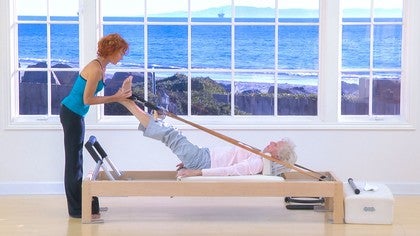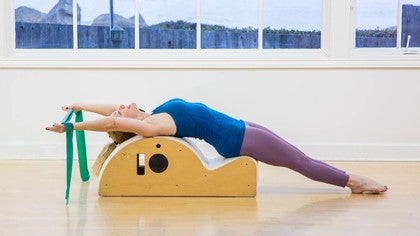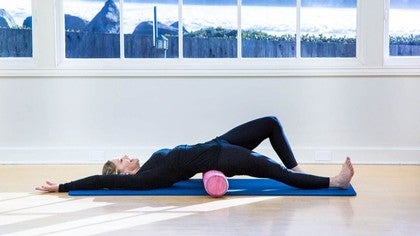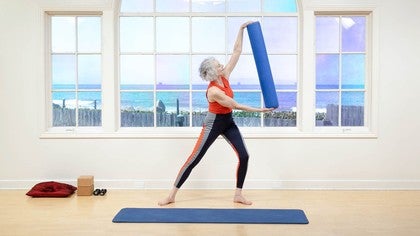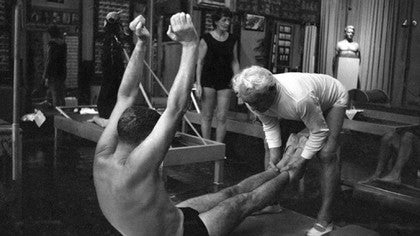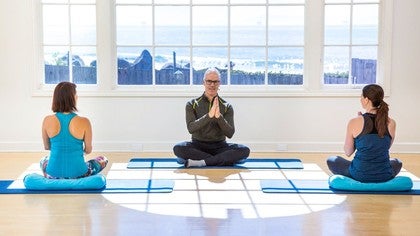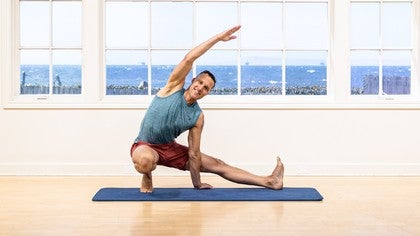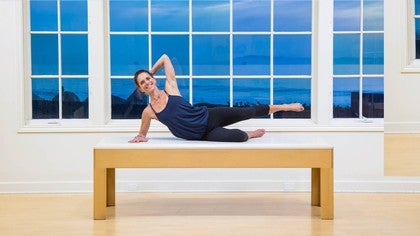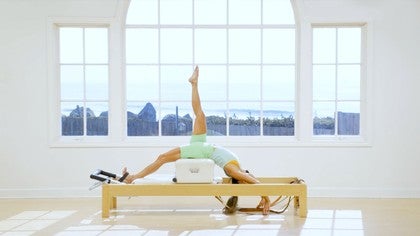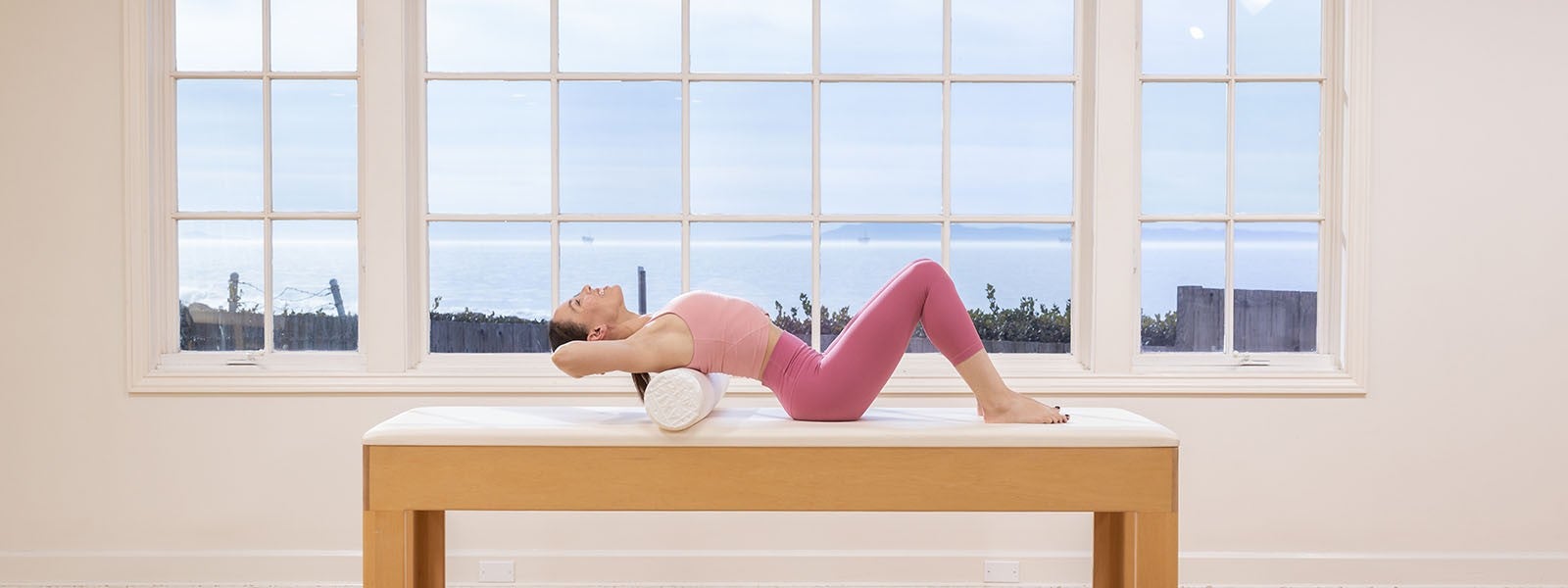
How Pilates Helps Maintain Mobility
What does it mean to maintain mobility? According to Joy Puleo, education program manager for Balanced Body in Sacramento, California, it's maintaining the joy of moving with ease, economy, and efficiency.
"If you are an athlete or performer, mobility is a requisite to healthy mechanics and development of strength in your desired activity," she says. "If you are simply a human who is working all day, working out when you can, and binging on 'Bridgerton' at night, maintaining your mobility is what will help you stay healthy longer, active through your lifetime, and physically engaged with the world around you."
Pilates has a reputation, fueled by media coverage of celebrities and influencers with sleek physiques, for producing aesthetically pleasing bodies. But that's hardly the most important benefit. In fact, those who have been injured or come to Pilates wanting to move better and are some of the method's most impassioned ambassadors.
"Our attitudes about how we look versus how we feel are never stronger than when we have an injury or ailment," says says Erin Wilson, a Pilates instructor based in Santa Barbara, California. "Having a six-pack or being able to lift an insane amount of weight over my head means nothing if I can't even bend down to put a shoe on," she adds.
"A lot of people want to do Pilates for core work, to have six-pack abs, or to get toned. But it's through the movement, done well, that we restore function," says Claire Sparrow, a Pilates instructor in Leeds, England. "If we move the correct way, we get the tone, the aesthetic benefits, and the mobility component."Move It or Lose It
One of the unfortunate realities of our current era is that most of us move less than previous generations. Blame it on technology, labor-saving devices, and over-reliance on cars. "It's why people are 'chair-shaped,'" says Sparrow.The good news is that it's never too late to do something about it. Our bodies are designed to heal themselves, and the way to do that is through movement.
"One of the great joys of Pilates is that it introduces mobility in those who are lacking, and it does it like nothing else. Pilates gets into all the nooks and crannies," says Sparrow. She credits Pilates with helping her clients of all ages access a greater range of movement, allowing them to perform the work of daily life.
Pilates emphasizes working the body as a complete system, including the small muscles that sometimes get short shrift in workouts. For these small muscles to step up and do their part in supporting and stabilizing the joints, they must be hydrated and mobile, says Sparrow.
"Staying mobile is where Pilates rocks," says Puleo. "Whether you are on the Mat, Reformer, or various Apparatuses, you are moving not just your bones, but all the tissues in your body. This movement stimulates the nervous system, calls on the circulatory system to bring nutrition and hydration to the tissues, and regulates our oxygen and carbon dioxide levels through our breathing," Puleo adds.
A Stable Foundation
It's not enough to simply be mobile. We need both mobility and stability. Again, this is where a Pilates practice really shines. "Our ability to be mobile in our joints relies first on a stable foundation," says Wilson. "Pilates always starts with the muscles that stabilize the body. This ensures that the movement happening around them is free and smooth," she adds.
Wilson points out that Pilates mobilizes the body in all the planes of movement, and in all the ways we are meant to move. "Pilates gives us a system to achieve balance in our muscles and joints, and the work offers continuous feedback on our improvement," she says.
Measuring Mobility
According to Puleo, one of the beautiful things about our human form is that it is always changing, adapting, and responding to the world around us and to the needs and tasks we ask it to move through. "As a result, the mobility of our spine and our joints and of our tissues are also always changing," she says.
Mobility can be measured with a device called a goniometer that measures the joint ranges of motion in each plane of movement. We can also assess mobility by doing things like trying to touch our toes or performing an exercise such as Cat/Cow and noticing the articulation of the spine. "We can also measure mobility in terms of our ease of movement, our delight and, dare I say, zest in movement, and by our desire to return to the studio because of how we feel after our workout," says Puleo.
This zest is a familiar by-product of the Pilates work, and it's one that continues to pay dividends as we age. Says Wilson, "The body will fail, so if you are putting your identity in how it looks, you will be chasing the wind."
That's not to say that looking good and feeling good are mutually exclusive. Says Puleo, "Staying healthy, being active, and remaining physically engaged also feels great in a little black dress!"
How do you stay mobile? Let us know in the comments below.
Comments
You need to be a subscriber to post a comment.
Please Log In or Create an Account to start your free trial.
